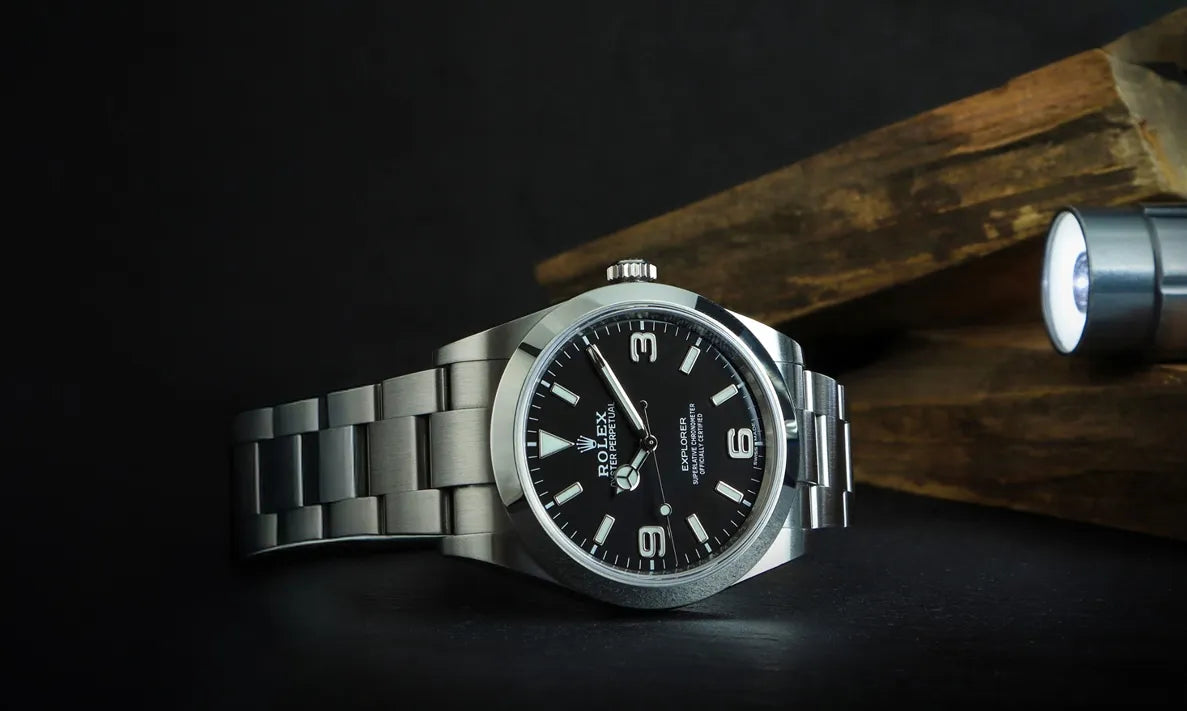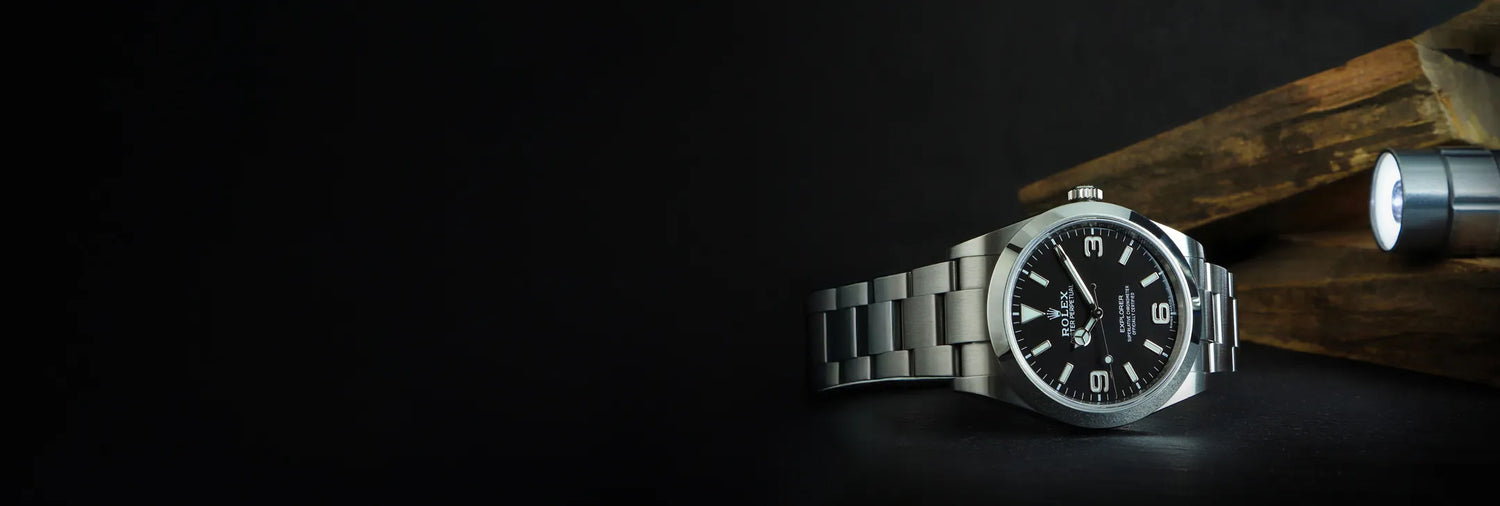The Rolex Day-Date is an undisputed icon in the world of luxury watches for men Rolex has created. Known for its exquisite craftsmanship, prestige, and timeless elegance, this model has remained a favorite among collectors, professionals, and watch connoisseurs. When choosing between the Rolex Day-Date 36 vs Day-Date 40, enthusiasts often find themselves debating which size suits them best.
While both models exude the classic Rolex sophistication, their size difference creates distinct wrist presences, influencing comfort, aesthetics, and overall wearability. This Rolex Day-Date 36 vs Day-Date 40 comparison will help potential buyers decide which version aligns best with their lifestyle, personal style, and investment goals.
Importance of Choosing The Right Size (36mm vs. 40mm)
Selecting the best Rolex Day-Date size is more than just a matter of preference, since it affects both the look and feel of the watch on the wrist. Traditionally, the 36mm model was considered the standard for dress watches. However, with changing trends and larger watch preferences, Rolex introduced the Day-Date 40, catering to those who favor a bolder and more modern style.
When comparing the Rolex 36mm vs 40mm sizing guide, wrist size plays a key role. Those with smaller wrists might find the Rolex Day-Date 36 more proportionate, while individuals with larger wrists or those who prefer a contemporary statement piece may gravitate toward the Rolex Day-Date 40 features.
History of the Rolex Day-Date Collection
The Rolex Day-Date collection has long been a symbol of prestige, evolving over the decades to meet the changing preferences of watch enthusiasts while maintaining its timeless appeal.
Evolution from 36mm to 40mm Models
The Rolex Day-Date first debuted in 1956, exclusively in precious metals such as gold and platinum, earning its status as the "President’s Watch." For decades, the 36mm case size defined the collection, appealing to those who valued classic proportions.
However, as larger timepieces gained popularity, Rolex responded by introducing the Day-Date II (41mm) in 2008. While it offered a grander size, many found it too bulky, prompting Rolex to refine the design and release the Day-Date 40 in 2015. This model retained the bold look of the Day-Date II but improved proportions for a more balanced aesthetic.
Why Rolex Introduced the Larger 40mm Size
The introduction of the Rolex Day-Date 40 was a strategic move to align with modern trends. Many contemporary watch buyers prefer larger cases, and Rolex sought to accommodate this shift while maintaining the elegance and refinement of the Day-Date collection.
By reducing the 41mm size to 40mm, Rolex struck the perfect balance between tradition and modernity, offering a more proportionate alternative for those seeking a luxury watch for men Rolex enthusiasts would admire.
Design and Aesthetic Differences
While both the Rolex Day-Date 36 and Day-Date 40 exude luxury and refinement, their differences in size, dial options, bracelet styles, and wrist presence create distinct wearing experiences.
Case Size & Proportions
The Rolex Day-Date 36 remains true to its heritage with a more traditional and refined presence. It sits elegantly on the wrist, making it ideal for formal occasions and those who appreciate understated luxury.
On the other hand, the Day-Date 40 has a bigger and more modern presence, making it stand out more prominently. It appeals to those who prefer a contemporary, statement-making timepiece while maintaining the same luxurious feel.
Dial Options
Both models feature a variety of stunning dial designs, ranging from classic champagne and silver to unique materials like meteorite and mother-of-pearl. Many collectors praise the Rolex Day-Date 36 for its vintage appeal and exquisite craftsmanship, as highlighted in numerous Rolex Day-Date 36 reviews. Meanwhile, the Day-Date 40 often includes contemporary textures and modern dial treatments, catering to those who prefer a more updated look.
Bracelet Choices
Both sizes come with the iconic President bracelet, a signature of the Day-Date line. Crafted in 18k gold or platinum, it enhances the watch’s luxurious feel. Rolex ensures a seamless fit with the concealed Crownclasp, reinforcing the timepiece’s elegance and exclusivity.
Overall Wrist Presence
If one prefers a watch that seamlessly integrates with formal attire, the Rolex Day-Date 36 is a perfect fit. However, for those who want a watch that commands attention, the Day-Date 40 makes a stronger impression without compromising elegance.
Movement and Performance
When it comes to movement and performance, both the Rolex Day-Date 36 and Day-Date 40 uphold Rolex’s commitment to precision, innovation, and reliability.
Rolex Day-Date 36
The Rolex Day-Date 36 houses the Caliber 3255 movement, a self-winding mechanical movement that boasts a 70-hour power reserve and Superlative Chronometer certification for ultimate precision. It features Rolex’s patented Chronergy escapement, ensuring greater efficiency and reliability.
Rolex Day-Date 40
Similarly, the Rolex Day-Date 40 features the same Caliber 3255 movement, offering identical accuracy and power reserve. Despite the larger size, Rolex maintains its precision and mechanical superiority, ensuring that the Day-Date 40 performs just as efficiently as its smaller counterpart.
Comfort and Wearability
When considering the Rolex Day-Date best size for the wrist, think about your comfort as well. The Day-Date 36 is lightweight and fits effortlessly under a cuff, making it ideal for formal wear and all-day comfort.
The Day-Date 40, while slightly heavier due to its larger case and bracelet width, remains well-balanced. Those with bigger wrists will appreciate the broader stance, while those who prefer a more substantial luxury watch will find it a great choice.
Price and Value Retention
One of the most important factors for buyers is the Rolex Day-Date investment value. While both models hold their worth exceptionally well, the Day-Date 36 carries a slightly lower price point, making it a more accessible option.
The Rolex gold watches comparison shows that the Day-Date 40 often demands a higher market value, particularly in exclusive platinum or gem-set variants. Over time, both models have shown strong resale values, but the larger size and modern appeal of the 40mm version may make it a better long-term investment.
Which One Should You Choose?
Choosing between the Rolex Day-Date 36 vs Day-Date 40 ultimately comes down to wrist size, personal style, and how you intend to wear this iconic timepiece.
Factors to Consider: Wrist Size, Personal Style, and Occasion
The choice between the Rolex Day-Date 36 vs Day-Date 40 depends on wrist size, personal taste, and how the watch will be worn. If a buyer prefers a classic, understated look, the 36mm model is an excellent choice. Those who want a bigger, more contemporary statement piece may opt for the 40mm version.
Who Should Go for the Day-Date 36?
-
Individuals with smaller to medium wrists
-
Those who prefer classic and traditional luxury watches
-
Buyers seeking a subtle, versatile timepiece that pairs well with formal and casual attire
Who Should Opt for the Day-Date 40?
-
Those with larger wrists or who prefer a bolder presence
-
Collectors looking for a modernized Rolex Day-Date model
-
Individuals seeking a luxury investment piece with strong resale value
The Timeless Debate: Which Rolex Day-Date Suits You Best?
Both the Rolex Day-Date 36 and Day-Date 40 exemplify the prestige and artistry of Rolex luxury watches for men. The 36mm model captures timeless sophistication with its refined proportions, while the 40mm offers a bolder, more commanding presence, appealing to those who favor contemporary elegance.
For those in pursuit of the best Rolex Day-Date size for their wrist, Time of Swiss offers an exclusive collection of authentic luxury timepieces. Contact us to explore our selection.
 +1 (213) 891-0909
+1 (213) 891-0909





